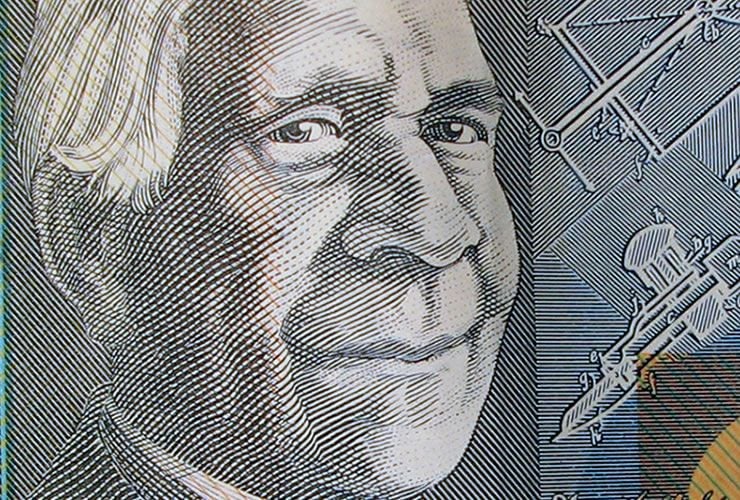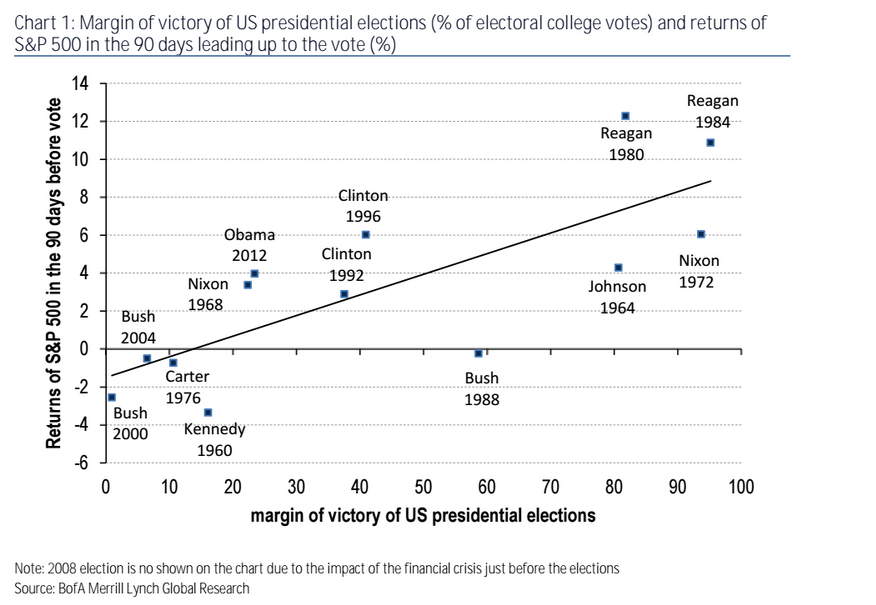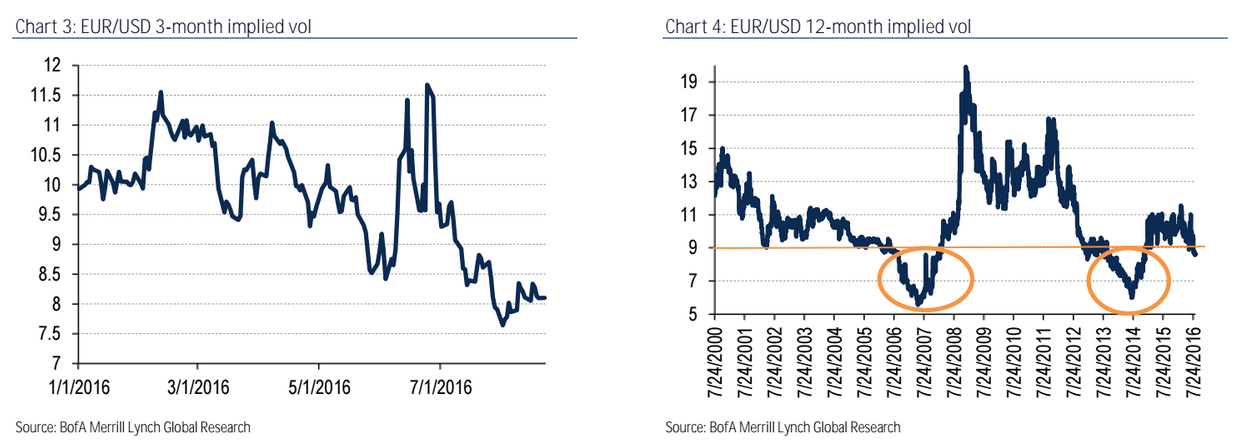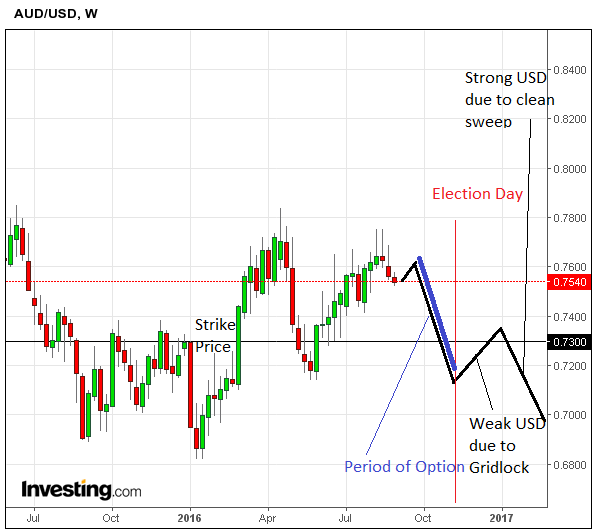Studies Suggest Australian Dollar to Rise Until Final Weeks Before US Election Day

The Australian dollar is likely to fall in value in the weeks leading to the US Presidential election, says one of Bank of America's FX and rates strategist.
History tells us that in the run-up to presidential elections with sweeping victories risky assets do much better than non-risky ones.
Ronald Reagan’s landslide victory over Walter Mondale in 1984, for example, was accompanied by an almost 11% rise in the S&P 500 in the 90-day period prior to the election.
On the other hand, “when the (winning) margin was less than 20% (1960, 1976, 2000, 2004), average equity returns over the same period was slightly negative,” notes Bank of America's David Woo in a recent note on the subject.
The strong gains in the S&P 500 since July 5 (when the 90-day period began) suggest that this election, the market expects Hillary Clinton to win with an overwhelming majority.
This suggests that the S&P as well as other assets such as the AUD/USD will continue to rise, at least up until the last few weeks before election day.
At that point, however, the winning candidate’s lead narrows markedly, such as happened in, “the 2012 presidential election during which Mitt Romney closed a 4-point gap with Barack Obama in the polls, twice, in the weeks leading up to the election day.” And, “the 2004 election when John Kerry was able to reduce George Bush’s 7-point lead in the poll in the beginning of September to just 2 points just before the election day.”
The closing down of the lead in the run up, causes uncertainty, which increases market volatility, which is negative for risk appetite, and leads to a fall in equities and the AUD/USD pair.
“These two lessons suggest there is a non-trivial chance that Clinton’s lead over Trump could narrow as we head into October (RCP poll average shows Clinton’s lead over Trump declining by 2 points to 6 points since August 9) and that volatility will rise accordingly as uncertainty increases. In our view, this could lead to an unwinding of risk,” concludes Woo, who advocates trading an AUD/USD 3 month expiry put option to take advantage of the sudden fall in risk appetite.
The option is just an instrument to make money out of AUD/USD, which Woo expects to fall below the 0.73 ‘strike price’ (the exchange rate is currently at 0.7542).
After the election AUD/USD will probably rise, argues Woo, as the result will probably lead to a hung Congress, which will have no outright party in control and therefore no power to radically alter policy – or “gridlock as he calls it”.
Evidence for this, he argues, lies in the very low volatility expected of the EUR/USD pair over 3 months and a year, gauged by the pricing of options which are sensitive to large ups and downs in the rate.
These are as low as 2014 indicating the market thinks there will be little immediate change in policy direction.
Such a situation of policy inertia will be negative for the US side of the pair and probably therefore see AUD rise against it.
Longer-term, however, the outlook would probably be USD positive in the medium term :
“A clean sweep would likely lead to both higher USD and higher rates over the medium-term,” argues Woo, with the pair potentially falling again beyond the next 9 months.
The negative aussie forecast in October could dovetail quite nicely with the top forming on Iron Ore, which is a key export for Australia, and therefore highly correlated to the Australian dollar.
The potential top was noted by analyst Michael McCarthy of CMC markets, and if it is in fact a top could lead to further downside pressure on the currency, and therefore AUD/USD.
Australian Dollar Today: Credit Spending Rises
Looking at recent moves in the AUD we note the currency trading softer in line with broadly softer global risk sentiment.
Data out mid-week shows total private credit returned to moderate growth in July, driven by a weak rebound in the business sector, where the latter has slowed over recent months.
This should prove positive for the AUD were it to confirm the Australian consumer was gaining in confidence.
Housing credit was again moderate.
"In our view, improving indicators elsewhere in the housing sector may point to increased borrowing," say ANZ Research.







